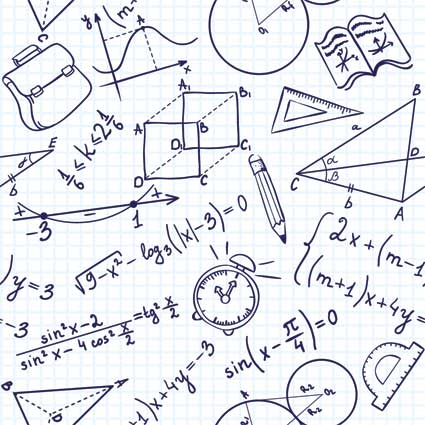| Closure |
Remember that the whole numbers are the positive integers plus zero. The sum of any two whole numbers is a whole number. Therefore, addition is a closed operation. The product of any two whole numbers is a whole number, so whole numbers have closure under the operations of addition and multiplication.
However, subtracting a whole number from a whole number does not always give a whole number. The same is true with division. The whole numbers do not have closure under the operations of subtraction and division.
If you look at the integers (positive numbers, negative numbers, and zero), you can say that they are closed with regard to addition, multiplication and subtraction but not division. Division would only be closed if all the rational numbers are included.
| Additive Axiom |
If equals are added to equals, then the sums are equal according to the additive axiom.
If a = b and c = d, then a + c = b + d
If a = 3 and a = b, then b = 3. If c = 5 and c = d, then d = 5. Therefore,
if a = b, that means 3 = 3 and if c = d, that means 5 = 5, so
a + c = b + d in this case is 3 + 5 = 3 + 5
| Multiplicative Axiom |
The multiplicative axiom states that if a = b and c = d, then ac = bd. In other words, if equals are multiplied by equals, the answer should be equal.
If a = b and c = d, then ac = bd
Let's look at an example.
If a = 6 and a = b, then b = 6. And if c = 8 and c = d, then d = 8.
Therefore, we can say a = 6 and c = 8, so ac = (6)(8) or 6c = (6)(8).
| Commutative property |
The commutative property tells us that the order in which two numbers are added does not affect their sum.
a + b = b + a
We can add 3 + 2 to get 5 or we can add 2 + 3 and get 5.
The commutative property also works with multiplication.
ab = ba
We can multiply 3 x 15 and get 45 or we can multiply 15 x 3 and get 45.
| Associative property |
The associative property extends this by saying that the grouping of numbers under addition does not affect their sum.
(a + b) + c = a + (b + c)
For example, (8 + 2) + 5 = 8 + (2 + 5)
Which gives 10 + 5 = 8 + 7 (both of which equal 15)
If we have a string of numbers such as 4 + 6 + 3 + 4 + 2 + 1, we could add them in order: 4 + 6 = 10 + 3 = 13 + 4 = 17 + 2 = 19 + 1 = 20.
Or we could quickly see that 4 + 6 is 10 and 3 + 2 is 5 and 4 + 1 is 5 and then add 10 + 5 + 5 to get 20.
| Distributive property |
The distributive property of multiplication over addition tells us that the product of a number and the sum of two numbers is the same as the sum of the products of the first number and each of the others.
a(b + c) = ab +ac
For example, 5(3 + 8) = 5(3) + 5(8)
In other words, 5(11) = 15 + 40
Which is 55 = 55
This shows us that we can distribute the multiplier that is outside the parenthesis to each of the numbers inside the parenthesis.
| Order of Operations - including Parentheses, Brackets, and Braces |
When a math problem involves a variety of operations, there is a specific order in which those operations must be performed.
2 + 3[5 + (4 – 1)]
Start by doing whatever is in parenthesis, then exponents which have not been discussed in this course, then multiply and divide in the order in which the operations appear left to right, and finally add and subtract in the order in which the operations appear left to right. Brackets ([ ]) are a type of parenthesis which are a step up and curved braces ({ }) are a step up from the square brackets.
The basics can be learned as PBBEMDAS
Parenthesis, Brackets, Braces, Exponents, (Multiply/Divide), (Add/Subtract)
To make it easier to learn, try this phrase:
Please Be Beautiful, Excuse (My Dear) (Aunt Sally)
Let's use this to solve the problem above:
2 + 3[5 + (4 – 1)]
Clear the parenthesis first: 2 + 3[5 + 3]
Then clear the brackets: 2 + 3(8)
Then multiply or divide in order: 2 + 24
Then add or subtract in order: 26
If the operations are not done in the right order, the answer can be very different. For example, if you multiplied the 3 x 5 first and got 15, your answer would then have been:
2 + 3[5 + (4 – 1)]
2 + 15 + (4 – 1) = 20
Or if you had added the 2 and 3 first, your answer would have been:
2 + 3[5 + (4 – 1)]
5[5 + (4 – 1)] = 5[5 + 3] = 5[8] = 40























